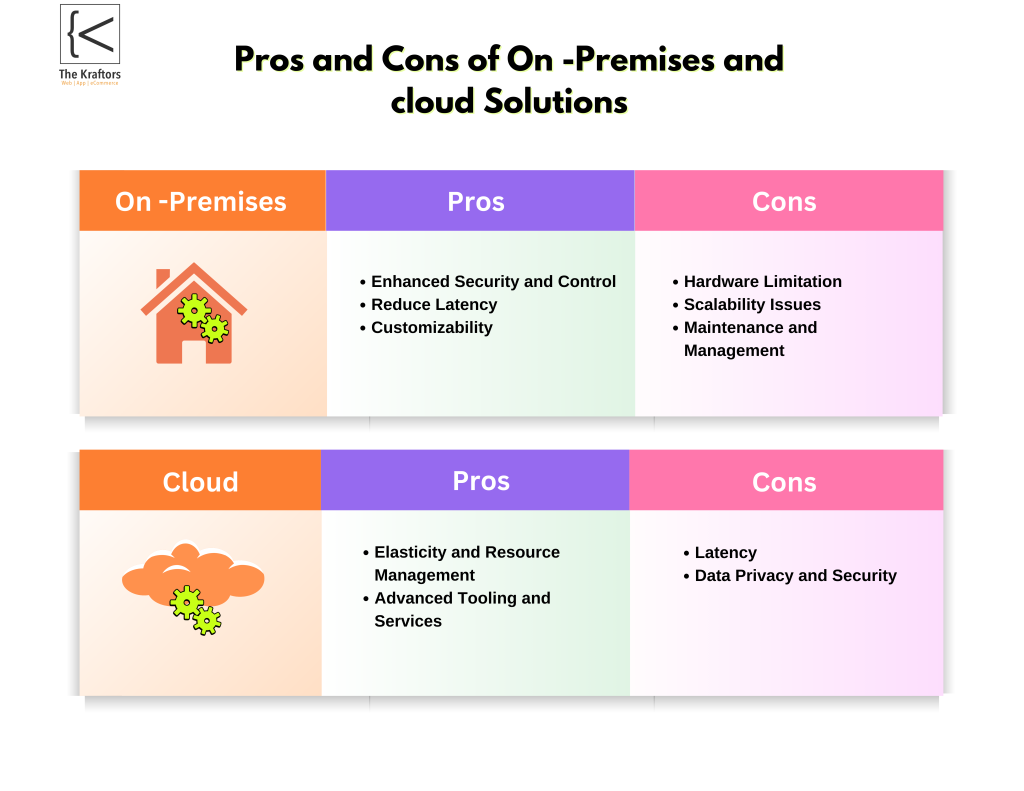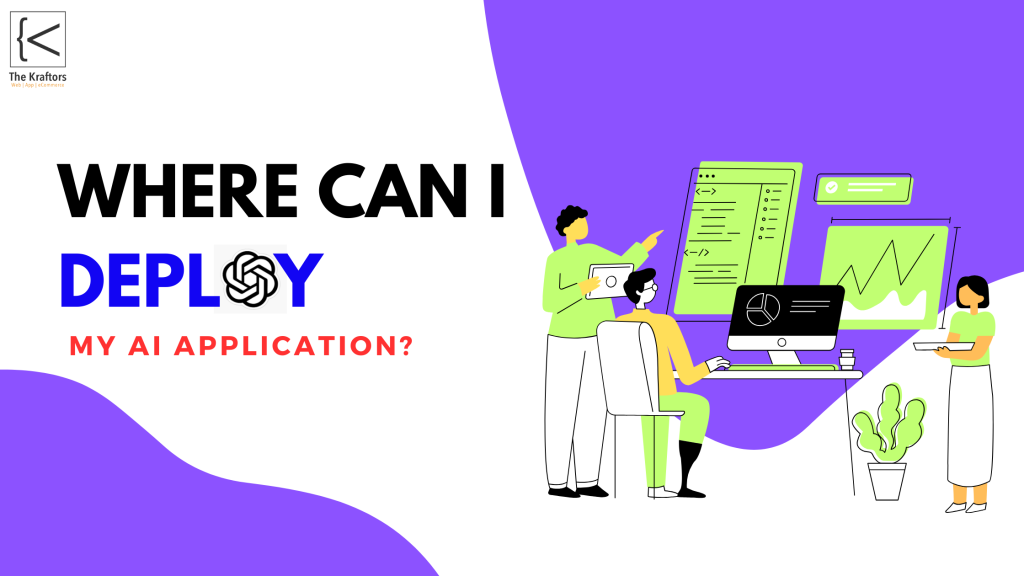There is no doubt when we say that AI applications have transformed different industries by automating tasks, providing insights, and enhancing decision-making. However, one needs to consider a crucial decision that developers and organisations face and that is where to deploy these AI applications.
Choosing between cloud, on-premise, and hybrid deployment approaches depends on several factors, such as resource needs, safety, expenses, and scalability. This post helps you explore how to deploying AI Application or the varying deployment options, their pros and cons, resource requirements, and important things to keep in mind in every situation.
Deployment on Cloud Premises
When deploying AI applications in the cloud domain, Cloud Service Providers (CSPs) such as Amazon Web Services (AWS), Google Cloud Platform (GCP) & Microsoft Azure need to be employed.
These platforms provide a broad spectrum of services and tools enabling AI deployment. Which includes infrastructure, data storage, machine learning frameworks, and development tools.
Advantages
Elasticity and Resource Management
Cloud platforms provide auto-scaling capabilities which ensure that AI models can handle varying workloads by automatically adjusting computational resources. Cloud-based advanced resource management technologies maximize CPU, GPU, and memory use, improving AI model performance.
Advanced Tooling and Services
Cloud providers offer a wide array of integrated tools and services, such as machine learning libraries, data storage solutions, and deployment pipelines, simplifying the development and deployment process. Cloud environments facilitate seamless CI/CD workflows, enabling rapid iteration and deployment of AI models.
Global Accessibility and Continuous
Cloud infrastructure supports distributed computing, allowing AI models to be deployed across multiple regions for better performance and reliability. It also provides collaborative tools that enable data scientists, developers and stakeholders to work together efficiently, regardless of their physical location.
Disadvantages
Latency
Cloud-based deployment can suffer from latency issues, especially for applications requiring real-time processing. The time taken for data to travel between the cloud and end-users can degrade performance.
Data Privacy and Security
Data sovereignty issues might arise from storing data in the cloud because it may be located in several countries and be governed by different legal systems. Cloud companies have strong security measures, yet there is always a chance of data leaks and assaults. It is essential to guarantee end-to-end security.
How Much Resources Are Needed for Deploying AI?
Computational Power
“AI is changing the world.” It is the science & engineering of making intelligent machines, particularly intelligent computer programs. Although not everyone is aware of it, many of the technology we take for granted, like GPS, Siri, or even flying drones, rely on AI technologies.
Storage
AI applications generate and process huge amounts of data to store large datasets. Cloud platforms provide flexible data storage solutions to meet these requirements.
Network Bandwidth
Transferring large datasets and processing real-time data require high network bandwidth.
Human Resources
Skilled personnel, such as data scientists, AI engineers, and IT personnel, play a critical role in developing, deploying, and maintaining AI applications.

Can We Deploy On-Premises?
Deploying AI applications on-premises involves using local data centers or servers in the organization’s physical premises. This approach is most appropriate for companies with specific security, compliance, or performance requirements.
Benefits of On-Premises Deployment
- Enhanced Security and Control: Organizations will have complete control over their company’s data and infrastructure, which is essential for industries with strict regulatory and compliance requirements.
- Reduce Latency: On premises deployment eliminates the lag related to sending and retrieving information from the cloud, an aspect that is good in terms of applications requiring real time processing.
- Customizability: Organizations are able to change hardware and software environments according to their needs and make sure they perform well.
Major Challenges to Deploy On-Premises
Deploying AI applications on-premises presents several challenges, mostly because of the significant costs associated with initial installations and subsequent periodic updates, as well as the intricacies involved in resource coordination.
Hardware Limitation
Hardware configurations are often particular to on-premises environments. It can be difficult and expensive to make sure there is enough CPU, GPU, and memory to operate sophisticated AI models.
Scalability Issues
Cloud environments provide flexible scalability upon request, which is unlike on-premises deployment involving purchasing more hardware and may require renovating facilities to accommodate new equipment.. This can take a very long time and cost a lot of money.
Maintenance and Management
On-premises deployment demands continuous maintenance and management. It also includes regular hardware upgrades, software updates, and security patches. Organizations must employ skilled IT personnel to manage these tasks and increase operational costs.
Power Consumption
Significant processing power is needed for high-performance AI models, which raises the possibility of cooling issues and increases energy consumption in on-premises data centers.
Talent Shortage
Operating an AI infrastructure on-premises means having a team of the specialized IT experts comprising data scientists, AI engineers, and system administrators. But this can be extremely tricky because it is not easy to get and maintain such workers due to operational overheads.
Conclusion
The process of how to deploy an AI application involves a careful analysis of the goals of the organization as well as its built-in capacities. In contrast, on-premises solutions give more power and ability to customize settings than deployment over cloud networks where we find unimaginable extensibility and advanced tool sets. For effective performance, security, and flexibility; one can achieve this by means of a hybrid approach.
For More:
We have recently added the Kraftors AI Image Enhancer and Background Removal tool for FREE. With this technology, users can easily improve image quality also get to erase backgrounds with a lot of ease than using other methods.
For more information about its features and benefits, kindly read through our detailed blog topics Revolutionize Your Images with Kraftors’ AI-Powered Image Enhancer.


